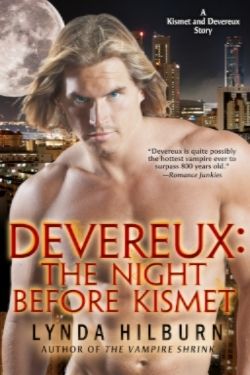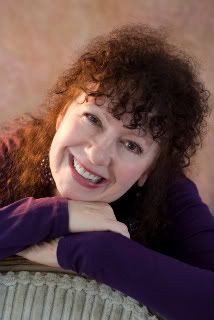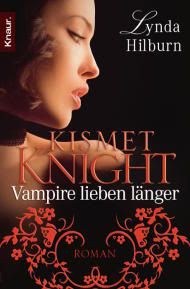Guest Blogger: Margaret Carter
The winner of Margaret's download is: Shawnta! I'll pass your email address along to Margaret. Thanks to everyone who participated. Happy 2009!

 Sex and the Sympathetic Vampire
Sex and the Sympathetic VampireWhen the vampire as a sympathetic character arrived on the scene, sex—as an element to be celebrated rather than feared—wasn't far behind. The erotic resonance of vampire fiction has been recognized for a long time, but in "Carmilla" and DRACULA the vampire's seduction was presented as an evil temptation to be resisted. The vampire gained recognition as a romantic hero (vampire heroes in love with human heroines make up the vast majority of the fictional pairings, although of course the reverse situation is far from unknown) after the sympathetic treatment of vampires developed in the fiction of the 1970s. Previously, non-evil vampires appeared only in the occasional short story, such as Ray Bradbury’s “Homecoming” and William Tenn’s “She Only Goes Out at Night.” The precursor to all the “good” vampires of the late twentieth century, of course, was Barnabas Collins from the TV series DARK SHADOWS in the late 1960s. Originally, Barnabas appeared ruthlessly evil, although motivated by a twisted version of love: He imagined Maggie Evans to be the reincarnation of his lost love Josette and kidnapped Maggie to make her his bride. Later, Barnabas grew into a sympathetic character because of his yearning to overcome his curse and become human again. As you probably remember, his friend Dr. Julia Hoffman conducted several experiments in a quest for a cure for vampirism.
The year before Anne Rice's groundbreaking INTERVIEW WITH THE VAMPIRE, Fred Saberhagen published an undeservedly lesser-known account of a vampire's history told on tape in his own words, THE DRACULA TAPE. For the first time, we saw the events of Stoker's novel through the Count's eyes. He's the good guy in this story, unjustly persecuted by the vampire-obsessed Van Helsing and the fanatical professor's misguided disciples. Dracula falls in love with Mina, who rises from her grave to join him on the last page of the book. Although Rice's INTERVIEW deserves credit for bringing the vampire as protagonist to the attention of a mass audience, I've never considered her vampires either "good" or particularly attractive. Their apparent compulsion to kill almost every time they feed, disqualifies them for that status in my opinion. (Louis moans about it a lot, but he still does it, and Lestat isn't terribly consistent about feeding only on those who supposedly deserve it.) If human-vampire relationships, my main interest, exist at all, they remain on the periphery of her world; the vampire subculture holds center stage. Still, Rice's bestselling series opened the way for the myriads of vampire protagonists who have followed in the past thirty years. A more direct forebear of the vampire as romantic hero, though, is Count Saint-Germain from Chelsea Quinn Yarbro's HOTEL TRANSYLVANIA, the first in a long-running series. The horror in Yarbro's historical novels arises from purely human infamy and violence. Saint-Germain always appears as the voice of reason and the defender of abused or neglected women, such as his one great love, Madelaine, in HOTEL TRANSYLVANIA, and Olivia in BLOOD GAMES (later the heroine of her own trilogy). Once "good" vampires became established in popular fiction, the way was open for romances and erotica focused on vampire-human pairings, as opposed to horror with romantic elements. If a heroine fell in love with a vampire who didn't have recognizable moral standards, she would probably lose the reader's sympathy, because she would be an accomplice to his crimes. Suzy McKee Charnas mentions this issue in her fascinating essay "The Beast's Embrace," posted on her website (www.suzymckeecharnas.com) under "Byways."
What is a good vampire, anyway? Because we have a very difficult time stepping outside our own human perspective, we tend to judge "monsters" of any type by the way they treat human beings. A good vampire, therefore, is one who adheres to an ethical philosophy similar to ours and refrains from unnecessarily harming us. We find conflicts between good (valuing human life) and evil (preying indiscriminately on human victims) vampires in such novels as Elaine Bergstrom's SHATTERED GLASS and George R. R. Martin's FEVRE DREAM, both of which coincidentally present vampirism as naturally evolved rather than supernatural. Creating a vampire who holds himself aloof from human values and yet comes across as a sympathetic character is a rare accomplishment. You can find a prime example in Dr. Weyland from Charnas' THE VAMPIRE TAPESTRY. Weyland, a naturally evolved predator at the top of the food chain, professes contempt for the ordinary mortals he hunts for food. But he seldom kills, and his relatively modest theft of blood from his victims contrasts favorably with the horrors human predators have perpetrated on their own species. In the course of the novel, he unwillingly comes to care for some of his human acquaintances.
We can distinguish two main ways of approaching the creation of a "good" vampire. In the first approach, vampirism is intrinsically evil, as it's portrayed in classics such as DRACULA. In this kind of framework, a good vampire is one who fights against his or her demonic nature. Examples abound, such as Barnabas Collins, Nick Knight in the FOREVER KNIGHT series, and Angel in BUFFY THE VAMPIRE SLAYER and Angel's own spinoff show. Such characters are typically searching for a "cure," a plot premise that makes their stories self-limiting. If they ever attain their goal, they lose the numinous allure of vampirism, so the story ends. In the second approach, vampirism is morally neutral. A vampire can make free ethical choices just as any ordinary person can. A natural rather than supernatural creature lends itself well to this approach, but in recent decades many supernatural vampires who fall into this category have been created, e.g., P. N. Elrod's Jack Fleming, Tanya Huff's Henry Fitzroy, and numerous vampire heroes of romance novels. Some romance vampires consider themselves cursed, but plenty of them are perfectly content with their transformed existence.
I've discussed this subject at greater length in an article in the "Strange Horizons" webzine, "Love, Lust, and the Literary Vampire," which can be found here:
http://www.strangehorizons.com/2002/20020722/vampire.shtml
My own vampires, members of another species secretly sharing our world with us, have reached varying accommodations with the necessity of feeding on human donors. Most regard us as prey or pets, while a few come to see us as equals worthy of love. Works in the series are listed in internal chronological order under “Vanishing Breed” on my website http://www.margaretlcarter.com/.
******************
Margaret will give away a PDF of her werewolf novel SHADOW OF THE BEAST (Amber Quill Press) to one person who leaves a comment here. Winner selected Tuesday evening.




















9 Comments:
First of all I loved the interview. I love any and all vampires, but I really enjoy the ones that have not lost their humanity. I liked Interview with the Vampire and watched Buffy - with Angel. It makes them appear human!
I loved the blog Margaret. I love anything dealing with vampires. I also enjoy the vampires that haven't lost their humanity. I loved watching Buffy the Vampire Slayer and Angel shows. I have also watch the tv show Kindred: The Embraced.
Great informative blog, Margaret! I've loved vampires since I was young, saw Dracula in the NYC play and in local theater productions, tons of movies, loved Love at First Bite, and Interview of a Vampire. I'm glad that vampires can be good, just as well as evil, and that's also how I show mine. Werewolves too. Just like humans. It takes all kinds to make the world go 'round! :)
what i like about the paranormal books is that so many writers can take the stories and come up with so many new ideas and stories for them you can read about vampires till your eyes blur but it never gets old and you can always find new and inventive stories out there you just have to be willing to read a new author.
Dark Shadows was one of my favorite shows! I loved Barnabas Collins. In fact, I can still remember the tune Josette's music box played. I don't know the name of it, though. The younger generation is big on vampires too. Think Twilight.
Interesting article Margaret. I found it informative.
Vamps are such bad boys. ; ))) They make great redemption heroes.
Interresting take on vampires and good versus evil. Most things about them are silly and funny. It's nice to see a serious post.
Deidre
Margaret: Thanks for guest blogging at Paranormality and for this wonderful post. Happy 2009!
Lynda
The "Interview With The Vampire" idea may have started on "Dark Shadows". Anne Rice was said to have watched the show.
Collinwood, 1970... Barnabas Collins, in an effort to prevent himself from harming others after being returned to his vampiric state by the Leviathan leader Jeb Hawkes, finds himself in an enchanted room. It is Parallel Time 1970. Barnabas soon becomes the captured prize of one William H. Loomis, a best-selling author who penned, "The Life and Death of Barnabas Collins". Discovering that Barnabas is the SAME Barnabas Collins that he had previously written about, Loomis torments the imprisoned vampire by forcing him to "tell his tale", particularly that of the tragic love between he and Josette, in a series of interviews. He writes down what a disheartened Barnabas tells with a particular glee--until Barnabas overpowers him, thus enslaving him. William is forced to board the vampire in the modernized Old House against the wishes of his wife who remains hostile to Barnabas. Before an enraged Barnabas--overwhelmed by his new bloodlust--escapes into the night (after attacking Mr. Loomis), he orders that all pages of the interview for the prospective book be burned in the fireplace. Mr. Loomis has no choice but to acquiesce.
Post a Comment
<< Home